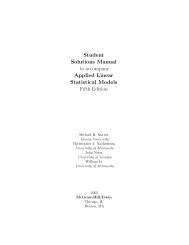Journal of Film Preservation - FIAF
Journal of Film Preservation - FIAF
Journal of Film Preservation - FIAF
You also want an ePaper? Increase the reach of your titles
YUMPU automatically turns print PDFs into web optimized ePapers that Google loves.
dans le contexte du débat très actuel :<br />
rétrospective complète vs rétrospective<br />
sélective. Les expériences récentes de<br />
Vienne, Toronto et Copenhague sont<br />
notamment mises à pr<strong>of</strong>it pour éclairer<br />
le débat.<br />
La production nationale et sa<br />
place dans le programme des<br />
cinémathèques (Londres, Toronto,<br />
Copenhague) est aussi débattue,<br />
comme l’est la question souvent<br />
controversée des séries thématiques<br />
et des séries dite « géographiques »,<br />
c’est-à-dire consacrées à un pays en<br />
particulier et qui, pour le meilleur et<br />
pour le pire, sont fréquemment bâties<br />
en collaboration avec les ambassades<br />
et les services culturels des pays<br />
sélectionnés.<br />
Sont également abordées les questions<br />
plus générales de planification :<br />
de l’équilibre des programmes à<br />
l’identification des publics cibles,<br />
en passant par la périodicité du<br />
programme imprimé, à la répétition<br />
des séances (voire même la mise à<br />
l’affiche prolongée d’un film : une<br />
semaine, deux semaines), comme<br />
parfois pratiqué à Londres, Toronto et à<br />
l’American Cinematheque, au prix des<br />
billets et l’existence d’un abonnement.<br />
L’expérience de distribution (au sens<br />
strict du terme) du <strong>Film</strong>museum<br />
d’Amsterdam, vu son caractère unique<br />
dans le paysage des cinémathèques,<br />
fait l’objet d’un chapitre particulier.<br />
Enfin l’auteur examine les pratiques<br />
actuelles vis-à-vis les festivals, les<br />
musées et les salles commerciales;<br />
soulève la question du vieillissement<br />
du public de nos projections; du<br />
caractère de la programmation<br />
(populaire ou élitiste?) et fait état<br />
d’expériences récentes et innovatrices.<br />
sits at a TV station, a cinematheque, or a festival and puts together a film<br />
programme. The curator, on the other hand, navigates all areas <strong>of</strong> a film<br />
museum.<br />
The archivist does not need to know how to interpret what he keeps in<br />
the archives and the programmer does not need to have knowledge <strong>of</strong><br />
a film’s origin. The curator, on the other hand, interprets the collection to<br />
the audience and staff <strong>of</strong> the institution. To curate at film museums is to<br />
translate and interpret, says Horwath.<br />
The view that a curator should both monitor a film collection and have a<br />
paternal, Olympian overview <strong>of</strong> all aspects <strong>of</strong> a film museum’s activities<br />
is met with surprise at Cinematheque Ontario, as they don’t have a film<br />
collection. There, the head <strong>of</strong> programming, James Quandt, organizes a<br />
large director-retrospective every second or third year, which tours 15-20<br />
North American cities and which is also shown at European cinematheques.<br />
Subjects have included directors such as Robert Bresson, Kon Ichikawa, Kenji<br />
Mizoguchi, Shohei Imamura, and Mikio Naruse. For these retrospectives,<br />
Quandt has developed detailed monographs. The touring retrospectives are<br />
viewed as the strength <strong>of</strong> the cinematheque – especially in relation to <strong>FIAF</strong>.<br />
Quandt sees himself as a curator: “It is possible to be a curator <strong>of</strong> ideas and<br />
various film series without being connected to a collection,” Quandt and his<br />
team claim.<br />
The Austrian <strong>Film</strong> Museum programmes many films from their own archives,<br />
and 80% <strong>of</strong> the films screened at the Cinémathèque Royale in Brussels come<br />
from the large film archive in the Belgian capital. The Museum <strong>of</strong> Modern<br />
Art in New York also draws largely from its extensive film collection when<br />
programming. In Copenhagen only about 45% <strong>of</strong> the film prints screened<br />
are from our own archive. It is at even a lower percentage at other venues.<br />
Finally, as mentioned before, there are cinematheques not connected to<br />
any archive.<br />
For many <strong>of</strong> the film archives and museums in Western Europe and the<br />
United States, cinematheques do not function as a window to a film archive.<br />
The majority <strong>of</strong> the programmed films come from other print sources rather<br />
than their own archive. In many archives, programming is a separate post,<br />
which as such brings our work as programmers closer to that <strong>of</strong> a curator<br />
at an art museum. There are so many different institution models when<br />
we refer to cinematheques and film museums that the definition <strong>of</strong> film<br />
curatorship <strong>of</strong>fered by the book <strong>Film</strong> Curatorship will only be relevant to very<br />
few people in a very limited number <strong>of</strong> film museums and archives.<br />
The job <strong>of</strong> programmer or curator at a cinematheque is different from<br />
the function <strong>of</strong> the curator at an art museum in that film programming<br />
is a continuous activity that takes place in a specific cultural institution.<br />
It is largely controlled by the need for versatility, comprehensiveness,<br />
and balance – certain historical periods, directors, and genres must be<br />
represented in the programme selection.<br />
A curator at an art museum implements more idea-driven, subjective<br />
projects. On top <strong>of</strong> that, several curators within the field <strong>of</strong> visual art work as<br />
freelancers and as such are not tied to specific cultural institutions. Our most<br />
important function within the film world, whether we call ourselves curators<br />
or programmers, is to create a contextual experience for the audience – to<br />
place films in their right context.<br />
7 <strong>Journal</strong> <strong>of</strong> <strong>Film</strong> <strong>Preservation</strong> / 81 / 2009
















